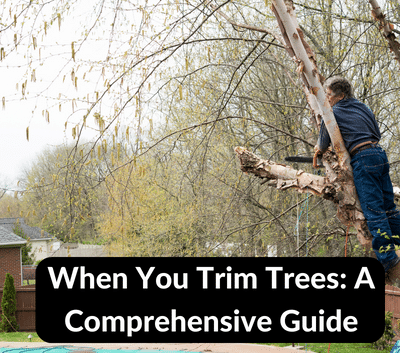Maintaining trees is essential for their health and aesthetics. Tree trimming plays a crucial role in preserving their vitality. In this comprehensive guide, we will explore the importance of tree pruning, signs that indicate the need for trimming, the best time to prune, factors to consider, techniques to employ, and the significance of seeking professional advice.
Table of Contents
Understanding Tree Trimming:
Tree trimming involves the deliberate removal of certain branches and foliage to enhance overall tree health and appearance. Regular pruning not only promotes optimal growth but also reduces the risk of disease and prevents potential hazards. Neglecting tree maintenance can lead to weakened structures and compromised safety.
Signs That Indicate Tree Trimming is Needed:
Overgrown branches and canopy: When branches become excessively dense, sunlight penetration and air circulation may be hindered, negatively impacting the tree’s health.
Dead or damaged branches: These can pose safety risks and may be indicators of disease or decay.
Disease or pest infestation: Visible signs of diseases or infestation, such as discoloration, cankers, or insect activity, warrant immediate attention.
Interference with structures or power lines: Trees that encroach upon buildings or power lines can cause significant damage and hazards.
Safety hazards during storms: Weak or overhanging branches can pose a threat during storms, increasing the chances of property damage or injuries.
Best Time for Tree Trimming:
Proper timing is crucial to ensure successful tree pruning. The following guidelines can help determine the optimal time for trimming:
Deciduous Trees:
Deciduous trees, which shed their leaves during certain seasons, should ideally be pruned during their dormant phase. This typically occurs in late winter or early spring before new growth begins. However, specific tree species may have different timing requirements, so it’s essential to research and consult local arborists for precise recommendations.
Evergreen Trees:
Evergreen trees, which retain their foliage throughout the year, can be trimmed at various times. However, it’s generally advisable to schedule pruning during the late winter or early spring to allow for regrowth before the onset of summer. Local climate conditions may influence the optimal timeframe, so consider regional factors as well.
Factors to Consider Before Trimming:
Before initiating tree trimming, several factors should be considered:
- Tree health assessment: Evaluate the overall health of the tree, looking for signs of diseases, infections, or structural weaknesses.
- Growth patterns and desired aesthetics: Understand the tree’s growth patterns and determine the desired shape or form to guide the trimming process.
- Local regulations and permits: Research and adhere to any local regulations or requirements regarding tree pruning or protected tree species.
- Hiring a professional arborist: For complex or large-scale tree trimming, it’s advisable to engage the services of a certified arborist to ensure proper techniques, safety, and expertise.
Techniques and Methods for Tree Trimming:
When it comes to tree trimming, employing the right techniques is essential. Some key considerations include:
- Tools and equipment required: Utilize appropriate tools such as pruning shears, loppers, and saws, ensuring they are clean and well-maintained.
- Pruning techniques for different branches: Understand the varying pruning methods for different branch types, such as thinning cuts for dense areas or heading cuts to control growth.
- Safety precautions to follow: Wear protective gear, use secure ladders or harnesses, and follow proper safety guidelines to prevent accidents or injuries.
Frequently Asked Questions
How do you prune dead branches?
To prune dead branches, follow these steps:
1. Inspect the tree for deadwood.
2. Use clean, sharp pruning shears to make angled cuts just outside the branch collar.
3. Dispose of the cuttings properly.
This encourages healthy regrowth and prevents disease spread.
How do you prune a decision tree?
To prune a decision tree, follow these steps:
1. Identify nodes with low information gain.
2. Remove redundant or irrelevant nodes.
3. Continue until the tree becomes simpler, avoiding overfitting and improving model accuracy and efficiency.
Conclusion:
Timely tree trimming is crucial for maintaining tree health, aesthetics, and overall safety. By understanding the signs that indicate the need for trimming, identifying the optimal time for pruning, considering important factors, and employing proper techniques, you can ensure the longevity and vitality of your trees. Remember, consulting a professional arborist can provide valuable guidance tailored to your specific tree care needs. So, take the necessary steps to nurture your trees, and they will reward you with their majestic beauty and benefits for years to come.




